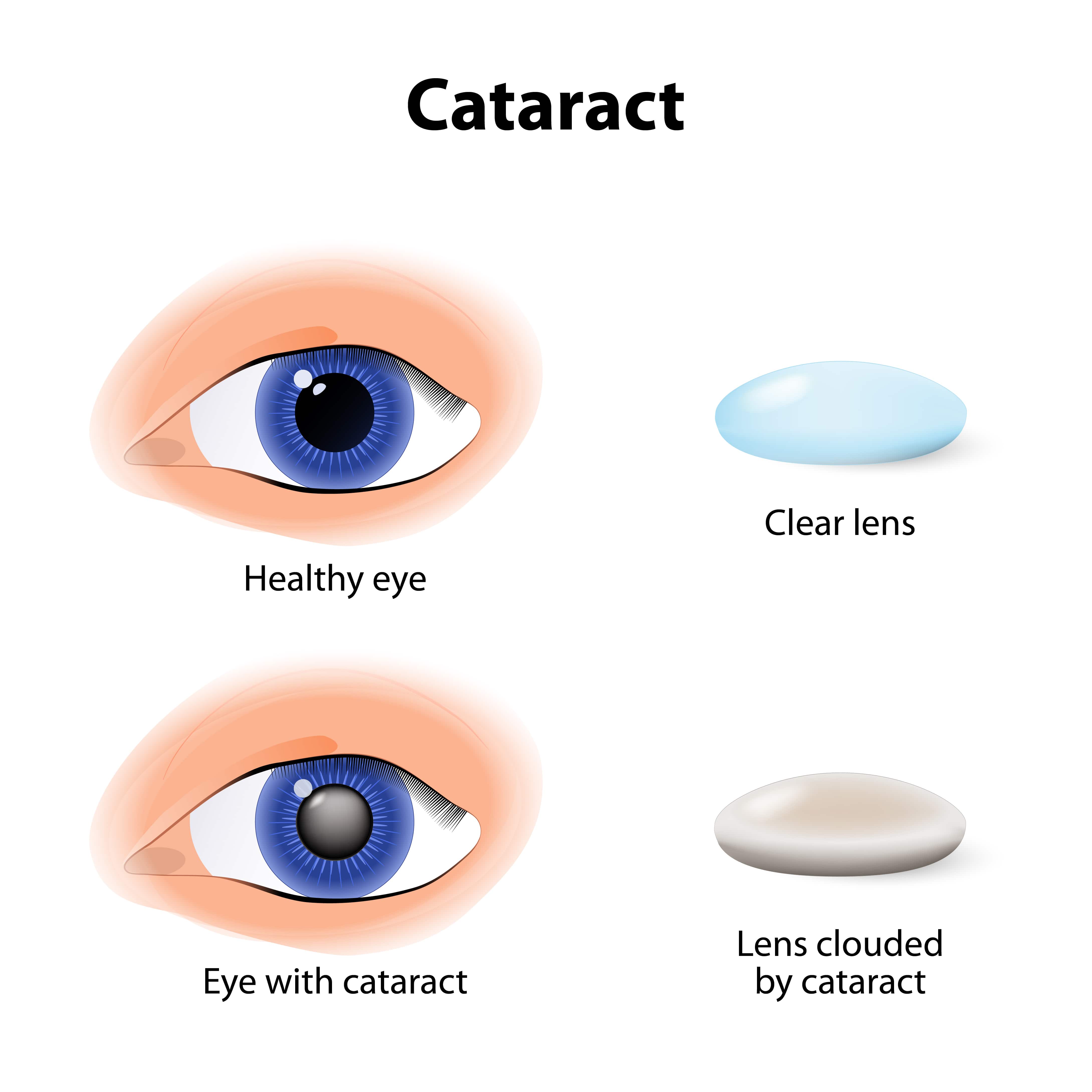What Are Cataracts?

Cataracts are one of the most common eye issues affecting over twenty-two million Americans over the age of forty. But, what exactly are cataracts and how can they be prevented or treated to avoid vision loss or further complications?
In simple terms, a cataract is a clouding of the lens causing vision to become foggy. The lens is the part of the eye that focuses light on the light-sensitive retina. When the lens becomes clouded, it causes the retina to receive a blurry image. This causes visual impairments such as: blurry or clouded vision, seeing double, light sensitivity, inability to see well at night, and seeing faded colors.
There are three types of cataracts: subcapsular, nuclear, and cortical cataracts. Subcapsular cataracts are those that are positioned towards the back of the lens and are commonly seen in people with diabetes. Nuclear cataracts are positioned towards the center (nucleus) of the lens and are usually seen as a result of aging. Finally, cortical cataracts start on the outer boundary of the lens and move to the center in a spoke-like fashion. Cortical cataracts are white and wedge-shaped.
Despite the different types of cataracts, they all have similar causes. Cataracts are caused when the naturally occuring proteins in the lens clump together and cloud a small area. As more and more protein clumps together, the cataract begins to grow and vision becomes impaired. This is most likely due to the simple fact that proteins change as we age. However certain things, like smoking, diabetes, excessive exposure to sunlight, obesity, high blood pressure, previous eye injury, drinking excessive alcohol, or long-term use of high steroid medications can increase your risk for cataracts.
While there is no guarantee against cataracts, there are certain things you can do to decrease your chances of getting one, or at least slow its progression. First, you will want to make sure to talk to your opthamologist about how often you should receive an eye exam and then stick to this schedule. You will also want to manage your other health problems, such as diabetes. In addition, eating a healthy diet with plenty of fruits and vegetables will give your body extra nutrients that will reduce your risk for cataracts. You should also wear sunglasses to protect your eyes from the sun’s harmful ultraviolet rays. Finally, you will want to quit smoking and reduce alcohol consumption if needed.
Even if you do develop cataracts, there are things that can be done to improve or restore your vision. In the early stages, you can purchase any number of visual aids such as new glasses, stronger bifocals, and a magnifying glass to improve your ability to see better. However, as the cataract progresses, you may eventually need to consider cataract surgery.
Cataract surgery is a relatively painless surgical procedure that can restore your vision. It is one of the most frequently performed surgeries in the United States and has an extremely high success rate. The surgical procedure consists of a surgeon removing the clouded lens and replacing it with a plastic intraocular lens.
If you think you may be suffering from cataracts or you are interested in preventing them, come visit Dr. Paul Trapeni today. Schedule a consultation and find out what your optical options are!

Dr. Paul D. Trapeni JrAt The Optical Shoppe, we're dedicated to optometry excellence under the guidance of Dr. Paul D Trapeni. Serving the Smyrna community since 1989, Dr. Trapeni is a trusted member of the community, bringing general and specialized optometry care to individuals and families throughout the area.


